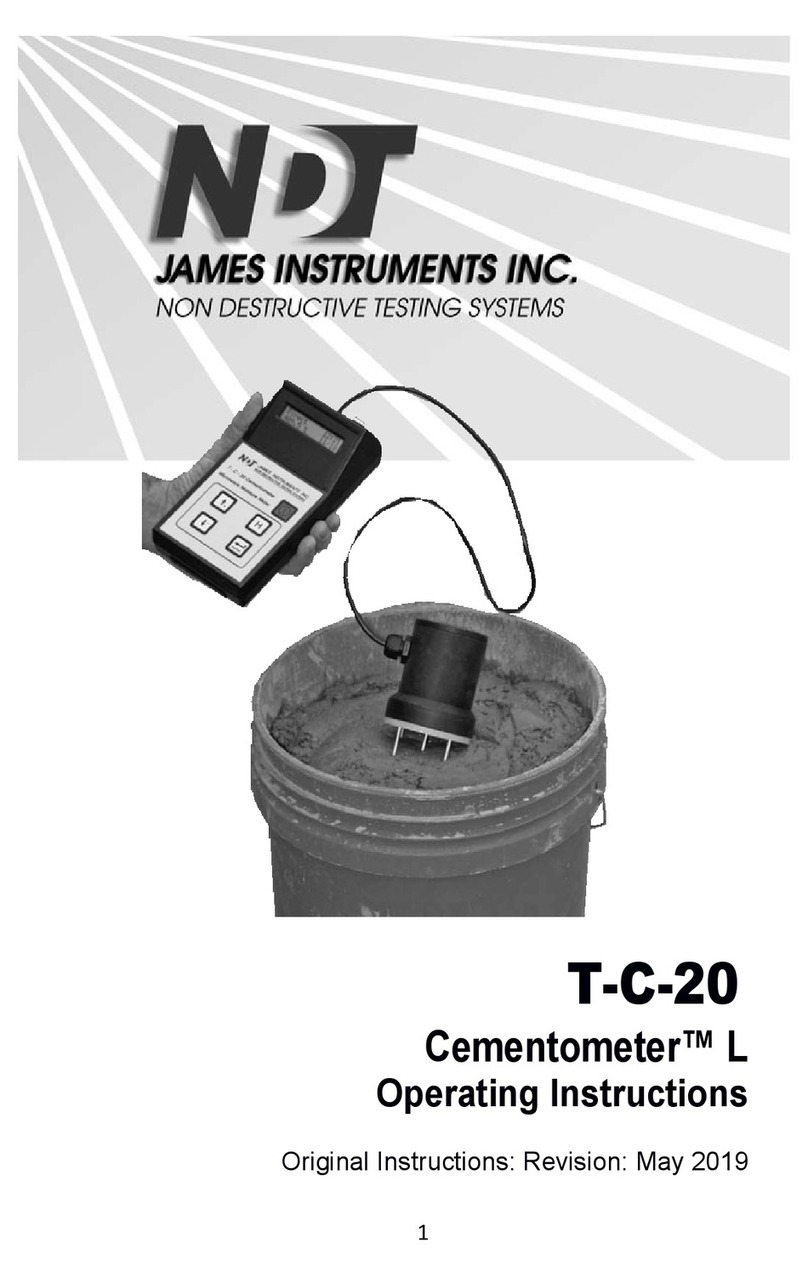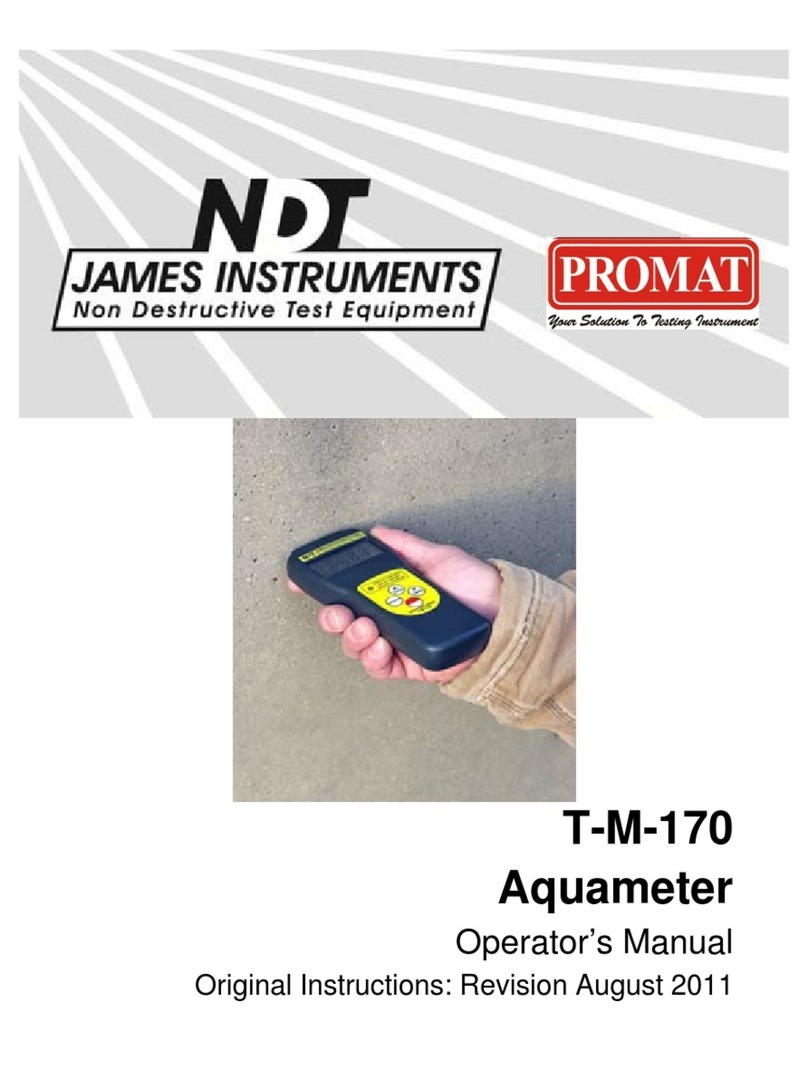
On: 8/1/2018
Introduction
The CL Test System offers a fast, accurate and in-place (in-situ)
determination of the total content (or more precisely the acid
soluble content) of chlorides contained in concrete.
The test is easy to perform and requires only the test equipment
contained entirely in a small briefcase.
Using a masonry drill bit, concrete is pulverized at the required
sample depth and collected in the dustpan provided. An accurately
weighed 3 gram sample is dissolved in 20 ml of extraction liquid;
consisting of a precisely measured acid concentration. The
chloride ions in the sample then react with the acid in the digestive
solution; in an electrochemical reaction.
An electrode, with an integral temperature sensor, is inserted into
the liquid solution and the electrochemical reaction is measured.
This uniquely designed instrument then converts the voltage
generated by the chloride concentration, and automatically applies
a temperature correction factor. The percentage of chloride by
weight of the 3g sample (or the lbs. of chloride per cubic yard); can
then be viewed on the LCD display. The CL unit displays the Free
CL Ions in an acid solution.
When performed on-site, the test provides immediate and direct
information regarding the chloride content in critical locations prior
to surface repair.
In the laboratory, the test may be used to measure the chloride
content of materials. These materials must first be pulverized to a
consistency (or fineness) equal to that of concrete powder; as
obtained with a masonry drill. The CL-3000 test is designed to
correlate to a water soluble titration method.
(Note: This test may also be used on fresh concrete mix.)





























